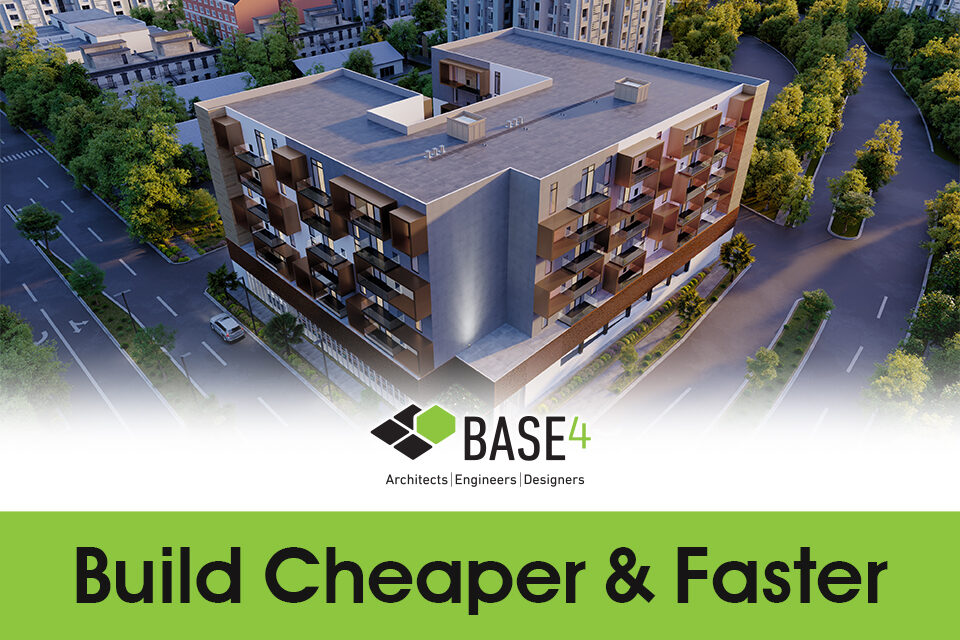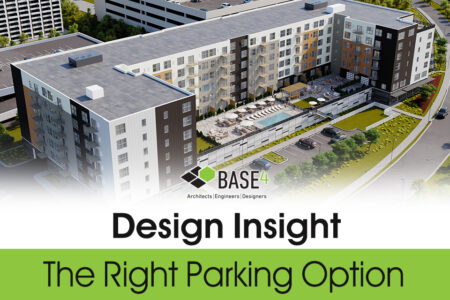Office conversion projects are set to double this year, indicating a growing trend in the real estate industry. This shift in focus presents a solution for repurposing outdated office buildings into much-needed residential spaces, addressing the demand for viable living options. Should you convert an office building into an apartment building? Read on.
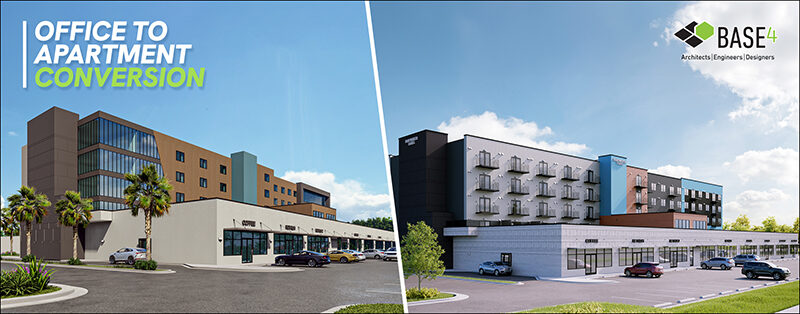
Nearly 70 million sq. ft. of office space, or 1.7% of total U.S. supply, was undergoing conversion to other uses in Q1 2024. Overall, for 2024, there are 55,300 office-to-apartment conversion projects in the pipeline, compared to 45,200 in 2023.
The Growth of Office-to-Apartment Conversions
Office-to-multifamily conversions, including mixed-use residential, account for 63% of the office space currently undergoing or planned for conversion.
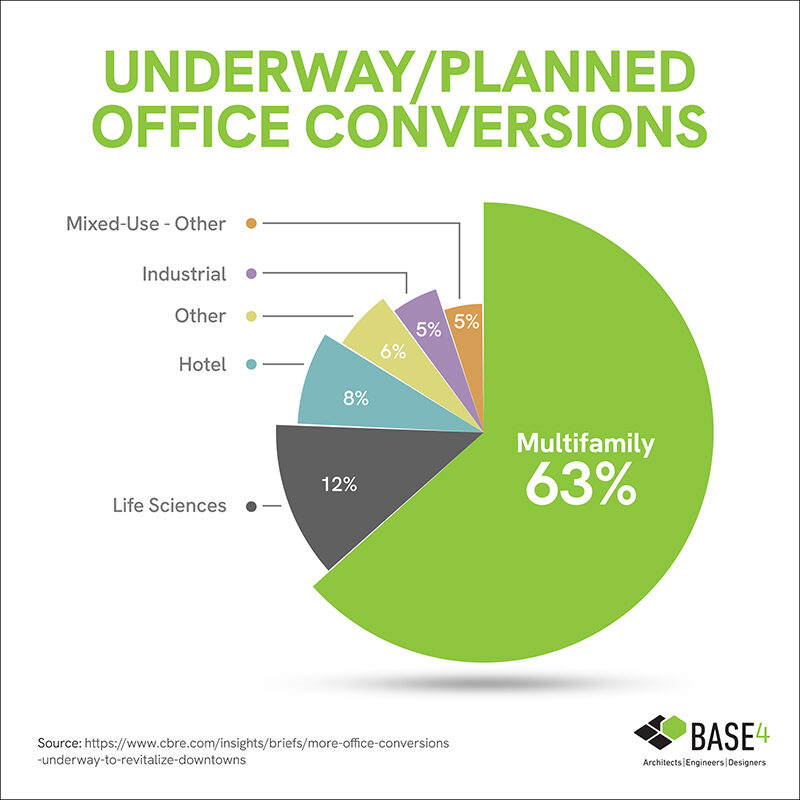
Benefits of Office-to-Apartment Conversions
- Construction Costs: Converting old office space is usually less expensive than constructing new apartment or condo buildings from scratch.
- Construction Schedules / Faster Building Times: Converting office buildings to residential buildings typically does not require significant structural changes, potentially making the conversion process more straightforward.
- Prime Locations: Office buildings are often in city centers, and limited real estate is available.
- Value Appreciation: The value of office buildings has decreased in the U.S. A recent study found that about a fifth of U.S. office space was vacant at the end of last year. Depending on the building, developers may be eligible for historic rehabilitation tax credits.
- Sustainability: Reduces environmental impact by repurposing existing structures and conserving resources.
- Meeting Housing Demand: Addresses the growing need for urban housing by repurposing underused office spaces.
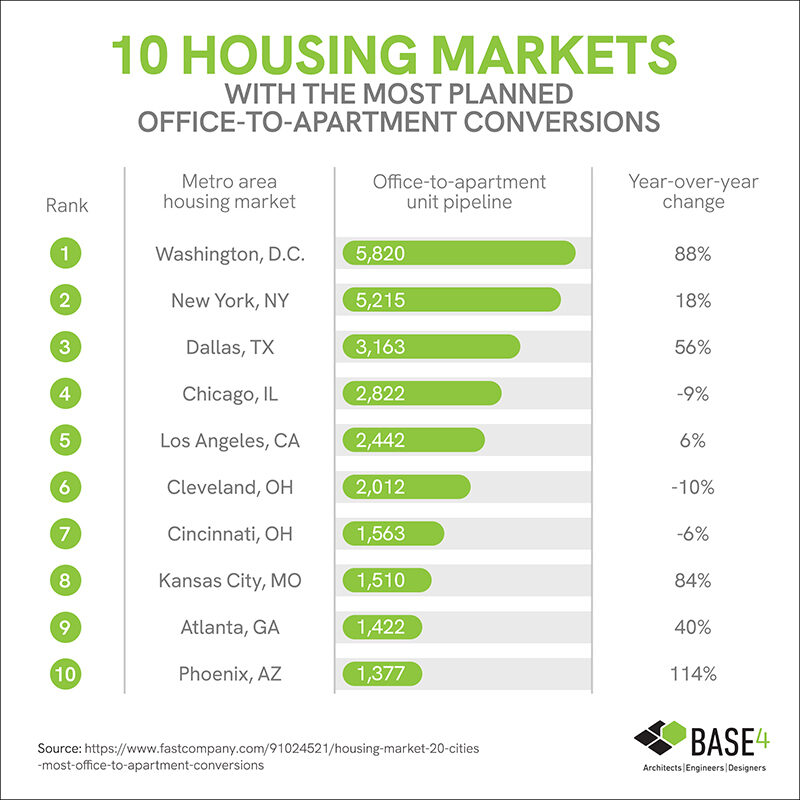
Did you know: Markets with older office buildings like Cleveland and Houston are prime locations.
Challenges in Office-to-Apartment Conversions
Converting office buildings into apartments is not only complex but also financially challenging. The viability of converting a building into residential units is influenced by factors such as:
- Zoning and Regulatory Constraints: Navigating zoning restrictions and obtaining permits can be complex and time-consuming.
- Space Optimization: Transforming office layouts to functional living spaces requires careful planning.
- Market Demand and Competition: Understanding local demand and distinguishing offerings from competitors is crucial.
- Financing Hurdles: Securing funding for acquisition and renovations may be challenging due to perceived risks.
The cost of converting an office building into apartments contemplates many factors; some expenses to consider aside from construction, labor, and permit fees are:
- Vacating Time: The time needed for existing occupants to leave impacts the project timeline and costs.
- Construction and Lease-Up: Consider time for renovations and attracting tenants or buyers.
- Refinancing Costs: Existing mortgage or debt may require refinancing for the conversion.
- Financial Performance: Assess current and future economic viability, including occupancy and market demand.
BASE4 | Your Multifamily Partners
Conversions aren’t suitable for every building, but that’s where BASE4 comes in. Our team works with developers and general contractors to rethink traditional building methods by infusing innovative technology, forward-thinking design, and offsite manufacturing principles to build projects CHEAPER and FASTER!
BASE4 | The Fastest and Cheapest Way to Build in 2023
Projects are becoming harder to build for one reason—cost…
BASE4 plays a crucial role in the multifamily industry by providing innovative and efficient solutions for property developers and managers. We help developers, general contractors, and factories find better ways to build through innovative technology, forward-thinking design, and offsite manufacturing.

Thank you,
Blair Hildahl
BASE4 Principal
608.304.5228
BlairH@base-4.com
![]()


